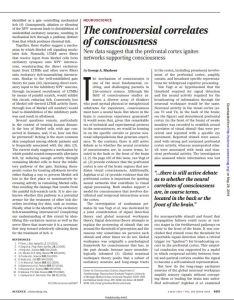Join getAbstract to access the summary!

Join getAbstract to access the summary!
George A. Mashour
The Controversial Correlates of Consciousness
New data suggest that the prefrontal cortex ignites networks supporting consciousness.
Science, 2018
What's inside?
Neuroscientists still don’t understand the neural correlates of consciousness.
Recommendation
You’re exposed to a deluge of sensory signals all day. You have some level of pure “phenomenal consciousness” of all the things you see, hear, smell, taste or feel. But you can’t attend to all of them. So how does the brain decide which signals to acknowledge and which to relegate to the subliminal realm of phenomenal consciousness? George A. Mashour’s Science article can’t solve what philosophers and scientists have been arguing about for millennia, but the article will engage anyone fascinated by the mechanisms that govern consciousness.
Summary
About the Author
George A. Mashour is the Director of the Center for Consciousness Science and a professor in the department of Neurosurgery at the University of Michigan.
















Comment on this summary